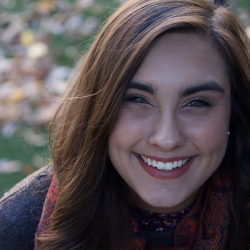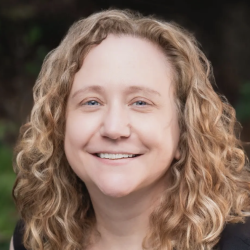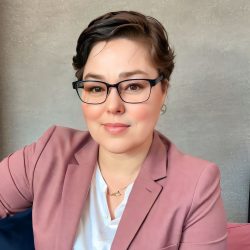
The Image Collage Technique, a tool used in individual therapy at the Center for Growth located in Philadelphia PA, Ocean City NJ, Mechanicsville VA and Santa Fe NM
A common trait of those who suffer with anxiety is low self esteem and a poor self image. This fuels the “I can’t…” motto. Overcoming a poor self image is tricky because we often aren’t aware of our self image. The majority of it resides somewhere in our subconscious mind, the part that is always active behind the scenes without us really knowing it. It is possible to train or change our subconscious mind and thoughts, but to do so we have to try to become aware of what it’s up to now. In order to upgrade to a more positive self image and switch to the “I can…” motto, we have to first dig up our current self image from the recesses of our brain.
Uncovering the subconscious thoughts that affect us everyday is much easier when one knows this trick: the language of the subconscious mind is image. Our subconscious mind speaks through pictures and responds to them. To uproot our current self image we must think of it in pictures and to replace it we must feed our mind new images. The simplest way to do this is by making an ‘image’ collage. Not only does it spare the inartistic the humiliation of attempting to draw, but searching through the myriad of pictures and images to find those to add to the collage stimulates our mind and helps us uncover things we might not already have thought of.
To make an image collage you need to begin with either one large poster board or two smaller poster boards. If using a large one, divide it right down the middle and draw a line to represent that division. You will be using one side to portray your current self image and another to portray your new self image, if using two boards, you’ll be doing the same thing but on separate posters. Label one ‘current’ and one ‘new,’ or ‘old’ and ‘new’, or any combination like that. Take a moment to think with words. Consider how you feel about yourself now and how you’d like to feel about yourself. Brainstorm for adjectives that would describe you. Jot these down on the back of your boards. Don’t be discriminatory. The point of brainstorming is get out anything that comes to mind. It is often the things you don’t expect that have been lurking around the longest. When you have a good list going on the back of each of your posters it is time to move on.
Next you must sort through images. Get out old photos. When you picture yourself now, what age are you? Many of us picture ourselves older or younger than we are. Sometimes our self image sticks to a traumatizing period in our lives. Find pictures from these age periods and paste them (or copies) square and center in your collage. You may also find that your idea of a positive self image involves a particularly happy time in your life. Maybe childhood or high school? Maybe your wedding day? Find a photo for your improved collage too. You will build your collage around these pictures of yourself.
Now, sort through stacks of old magazines or even books. Newspapers could work also, anything with pictures in it that you don’t mind cutting up. You might have to buy a few new magazines for this if you don’t have old ones lying around. Cut out anything that jumps out at you. Don’t think about why right now. Like your brainstorming earlier you are simply trying to gather as many images as possible. You might want to focus on one part of your collage first and then do the other one next. When you have a good stack of pictures to work with for both halves of your image collage you can begin to sort through them. Paste them around the photo of yourself, working from the center out to the edges of your poster board. As you paste each picture think about why you’re using it. Why does this image represent me? Why is it part of my poor self image? Why is it part of my positive self image? What exactly does this picture represent? Some of your images may be obvious while others are more abstract. That’s okay. This is the language of your subconscious mind, so there is no good or bad. Allow yourself to feel any emotions as they arise during this process. It is better to work with the negative side first as it is usually the most difficult.
When both sides are finished, look at them next to one another. Consider the differences. How different are they? What makes your negative or poor self image “bad”? What makes your positive collage “good”? What pictures or qualities can you work on first? Are there any that are unchangeable? How can you approach those so that they don’t continue to damage your image? What about the positive side? What pictures there represent things you already possess? Things you desire? How much of this side is simply a matter of perspective? Does anything here seem out of reach or unattainable? Why? How can you find another way to accomplish how that thing would make you feel? Use your collage as a springboard to begin an important dialogue with yourself and your subconscious mind. What would your negative self image say to you? What would your positive self image say? What do they think of one another? Make notes on anything you come up with here so you can utilize it later.
Keep your image collage for a while. When you are feeling low pull out your image collage and see how far you’ve come from your previous self image towards your desired self image. Go over the pictures of your new self image carefully. Imagine your subconscious mind as a giant scanner, and scan each image in. See your mind storing these new images and erasing the old. Make note of any feelings this may arouse. You can share your image collage with a spouse, parent, or even therapist. Or, if you prefer, you can keep it private. Follow your instincts here and do whatever makes you most comfortable. The image collage can be a valuable tool for improving the self image of anyone suffering from anxiety. It can even be adapted to other ideas, like the ‘trigger’ collage for example. The idea is to use the language of pictures to communicate with your deepest self so you can control what you feed it and what it feeds you.
You can self schedule an in-person or virtual therapy session at the Center for Growth by calling (215) 922- LOVE (5683) x 100.
Our Guarantee: If after your first session you are not sold that you are working with the right therapist, do not hesitate to call our intake line at 215 922 5683 x 100 or Alex at (267) 324-9564 and ask to be rescheduled with another therapist. The choice of how you want to proceed is yours. Our only goal is to support you in becoming the best you possible.
For your convenience, we have brick and mortar offices and work with clients virtually in Connecticut, Delaware, Florida, New Jersey, New Mexico, Pennsylvania, and Virginia.
Physical Therapy Office Locations:
Ocean City Therapy Office 360 West Ave, Floor 1, Ocean City, NJ 08226
Mechanicsville Therapy Office 9044 Mann Drive, Mechanicsville Virginia, 23116
Society Hill Therapy Office 233 S. 6th Street, C-33, Philadelphia PA 19106
Art Museum / Fairmount Therapy Office 2401 Pennsylvania Ave, Suite 1a2, Philadelphia PA 19130
Providence Therapy Office 173 Waterman St. Providence, RI 02906
Fayetteville Therapy Office 101 Devant Street #606, Fayetteville GA 30214
Santa Fe Therapy Office, 2204 B Brothers Road, Santa Fe, New Mexico, 87505
Telemedicine Therapy Locations: We have therapists who are licensed to work in Connecticut, Delaware, Florida, Georgia, New Jersey, New Mexico, Pennsylvania and Virginia and Pennsylvania
Therapy Services Offered in Fayetteville, Ocean City, Mechanicsville, Philadelphia, Providence, Santa Fe:
Individual Counseling and therapy
Couples Counseling and marriage counseling
Teen Therapy and Adolescent Therapy and tweens and child counseling
Family Therapy and multi-generational counseling
Art Therapy and Counseling no art skills needed
ADHD Therapy and ADD, Dyslexia, Autism, Tourettes counseling
Anxiety, Panic, OCD Therapy and worry and fear support
Breaking the cycle of Codependency and being your own person
Overcoming Chronic Illness and Chronic Pain .
Depression Therapy and sadness, gloom, and upset support
Functional Neurological Disorder (FND) Therapy is a particular style of therapy designed for people with problems affecting their nervous system, how the brain and body send and receive signals.
Grief Therapy and loss, End of A Relationship, rejections, pregnancy and loss and therapy
Mindfulness Based Therapy and spirituality based therapy
Narcissistic Abuse Recovery child of, parent of, spouse of, sibling of a narcissist.
Sex Therapy and sexual function & dysfunction, sex addiction, sexual orientation and gender identity support
Trauma Therapy both emotional and sexual abuse, complex trauma, PTSD counseling
Divorce support
Affairs, Infidelity, Unfaithful, Cheating counseling
Parenting therapy
Personality disorder treatments Narcissist, Borderline, Histrionic
Setting Boundaries and identifying ones own Core Beliefs
Just name some of the Mental Health issues that we work with. Our goal is to help you Change and Achieve Your Dreams


















